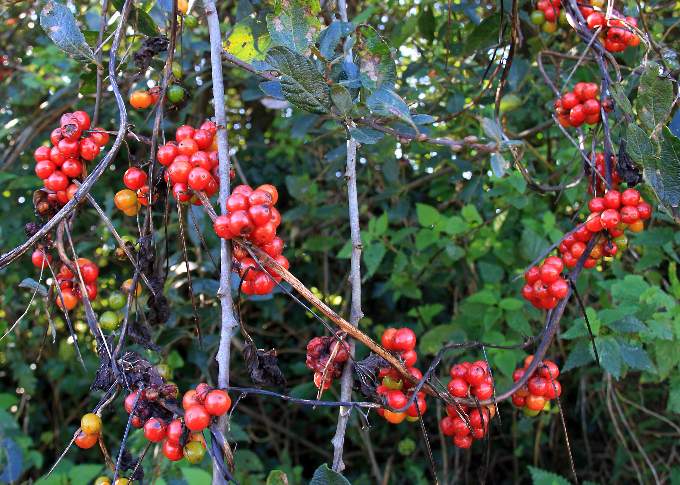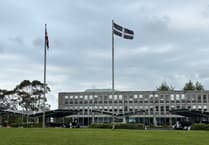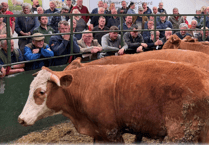I had a lift over to Pounda - on the road to Blunts - that must be a good mile away. Walking back to Quethiock the first thing I noticed, something that must be obvious to all who use that road, is how much vegetation is growing on the east side of the road. There is bracken, nettles, long grass, hogweed and even the saplings of ash, hazel and sycamore, all interwoven with a few wild roses.
This greenery was almost a metre deep in some places and what has always puzzled me is the fact that so much grows on the hedgerows and on waste ground but when you plant beans, onions or sweetcorn in your garden they need a good feed of fertiliser or manure – cow dung is my choice, to get any crops worth growing.
I spotted some colour on the hedge and noticed that it was a small tortoiseshell butterfly that had pitched on a single blue, what I think was a Michaelmas daisy, but how could this flower be growing on a hedge some distance from the nearest dwelling house? Small torts are one of the most abundant butterflies in the country and have two or three generations each year and those that are still on the wing as winter approaches will hibernate in a garden shed or in the loft of a dwelling house.
On the sheltered hedge were several red campions still out in bloom, I think these flowers – Silene dioica – can be seen virtually all the year round in Quethiock parish. Hogweed – Heracleum sphondylium – is another plant that seems to flower over many months, and on some plants, there are these round umbels of tiny white flowers whilst right beside them on the hedge, growing from the same rootstock, are stems displaying their seeds.
There are loads of different autumnal berries on the hedges now and the prettiest, in my opinion, are those of the black bryony – Tamus communis - plants. They look just like strings of shiny red beads that have been thrown over the vegetation, just the berries, on their long climbing stems as their heart-shaped leaves have already died off.
The beautiful red hips of dog roses also feature on the hedgerows now. These were once an important source of vitamin C and were collected during the Second World War to provide up to two and half million bottles of rose hip syrup, which was said to be the equivalent of twenty five million oranges. It must have been quite a job for children picking the hips off their prickly stems.
When I got back to the village, I took a walk around the houses and photographed a goldfinch picking at the seeds on a teasel plant. Oddly, I don’t think I have ever seen any other bird but a goldfinch, eating off these tall natural feeding stations.




